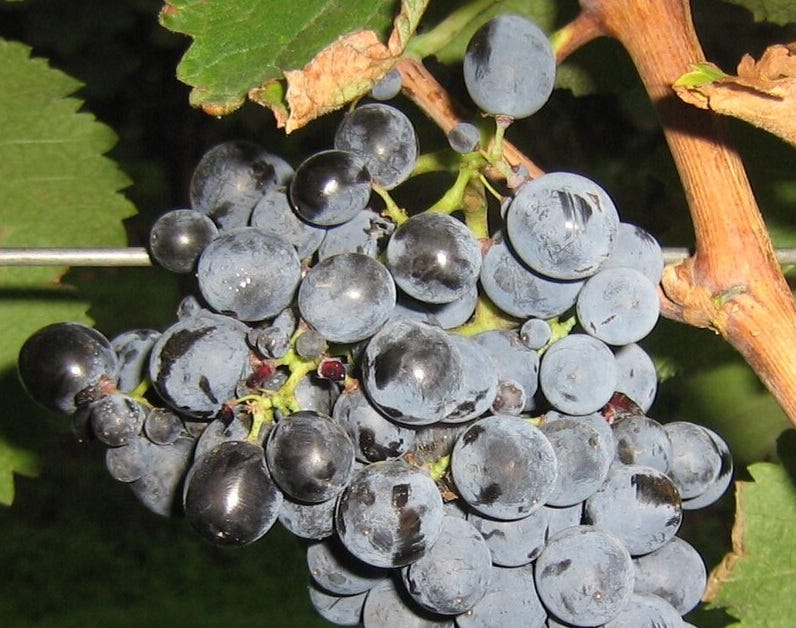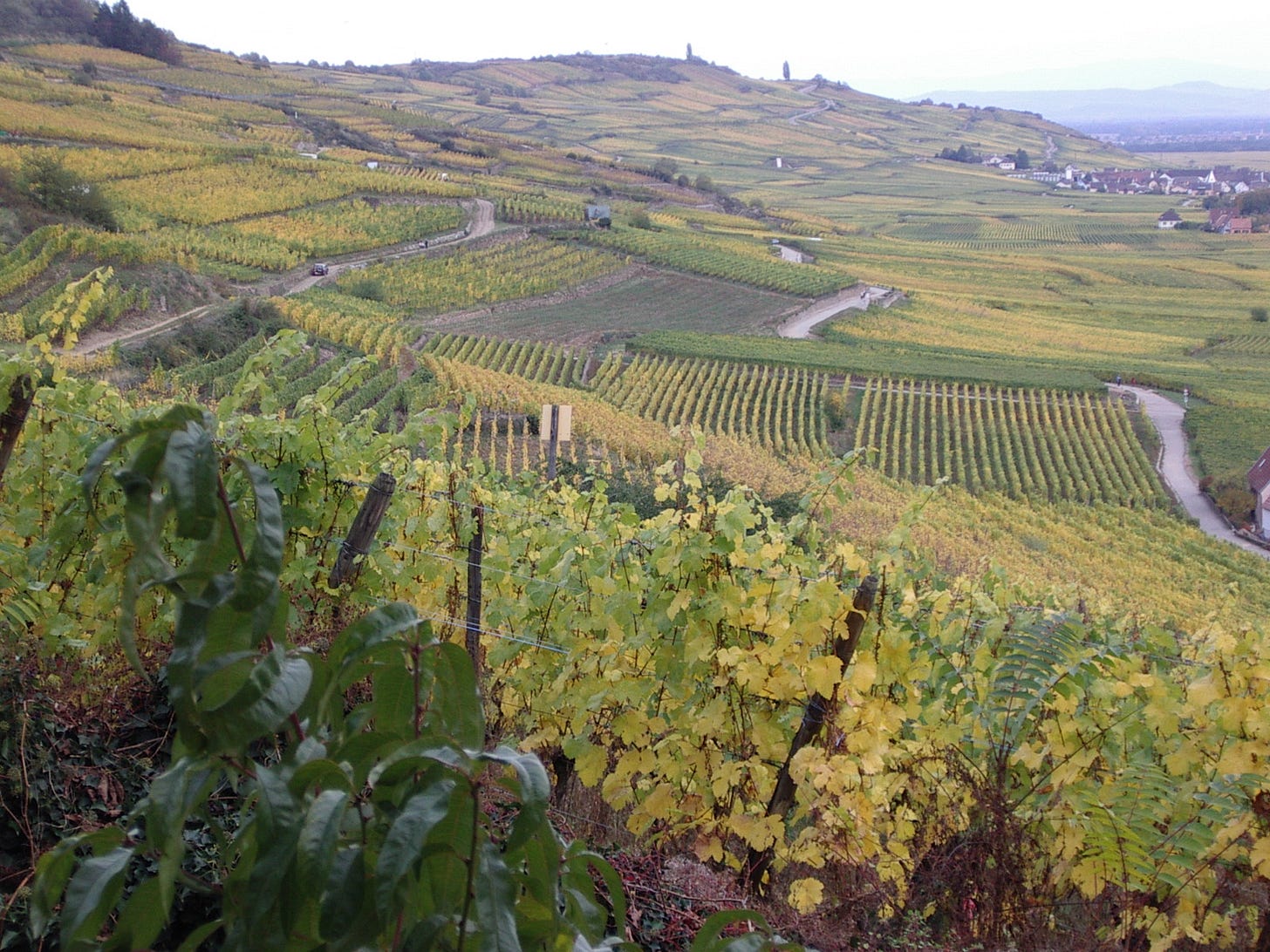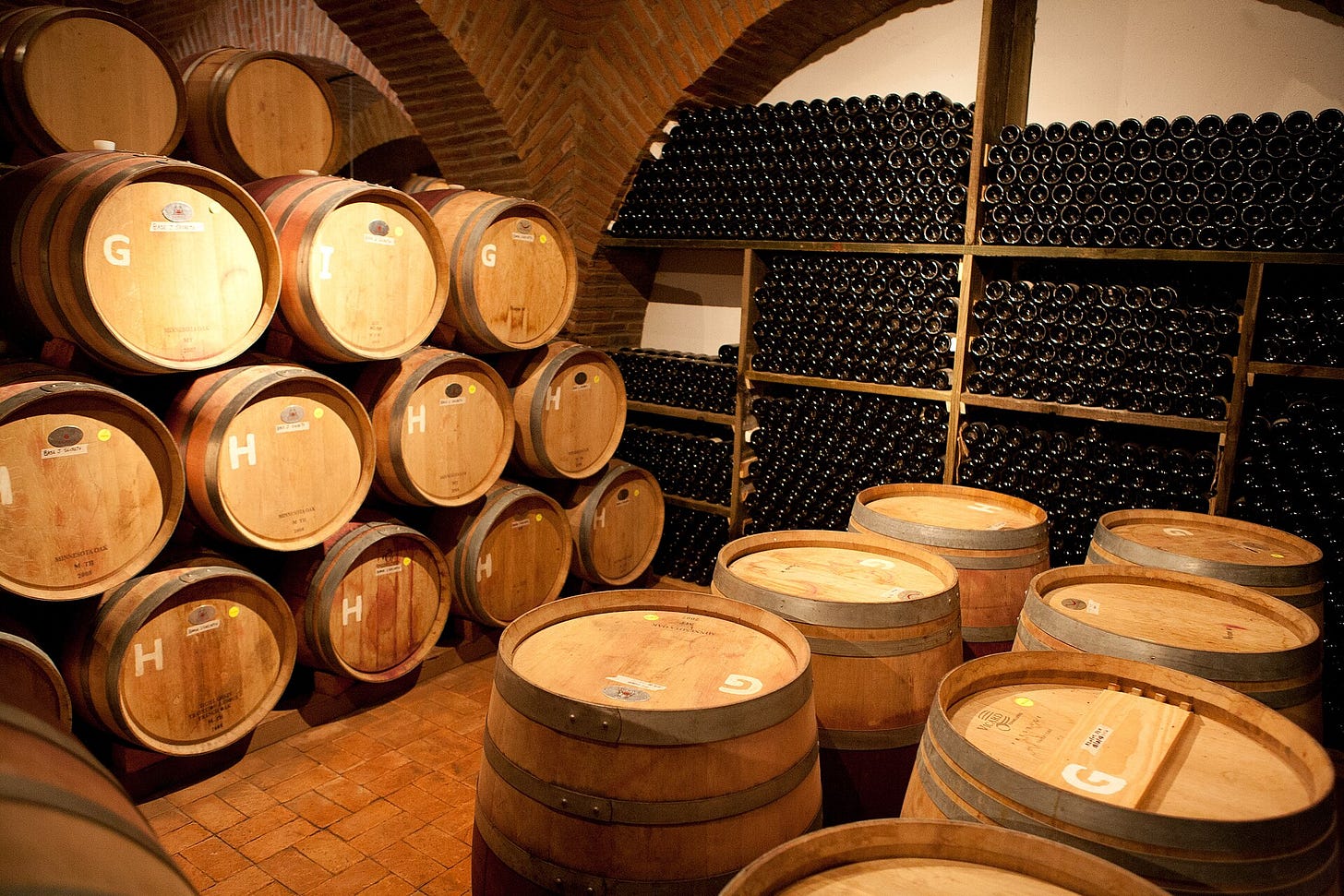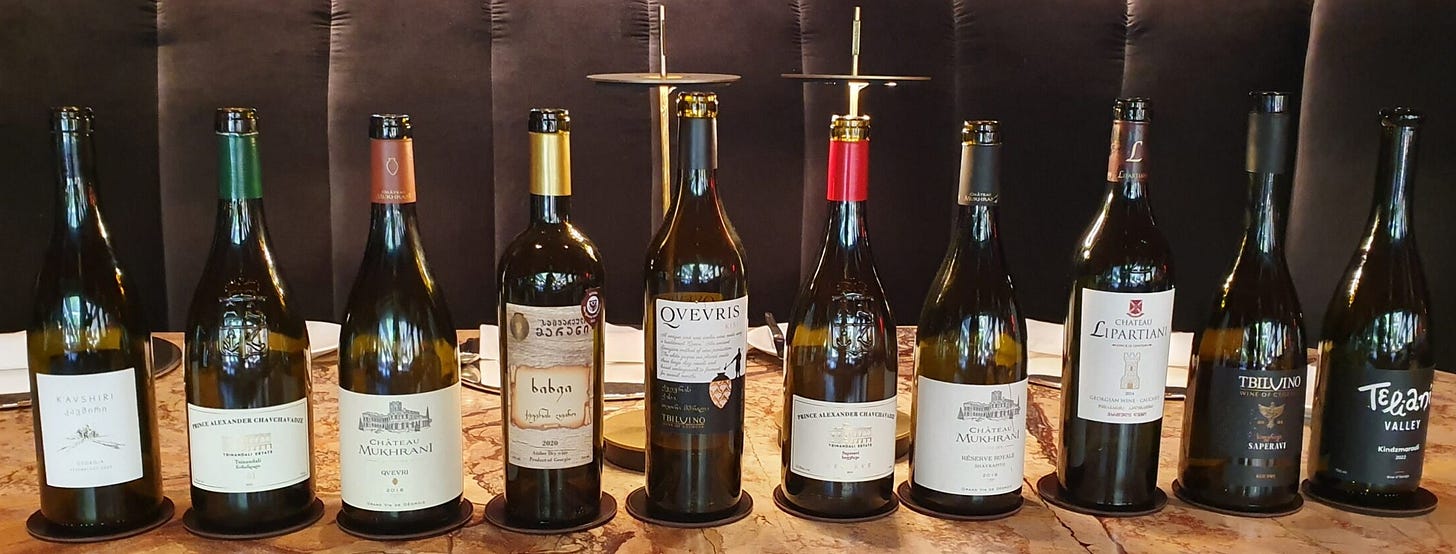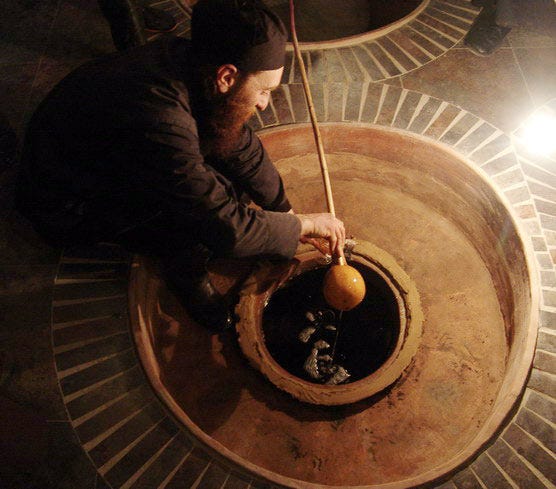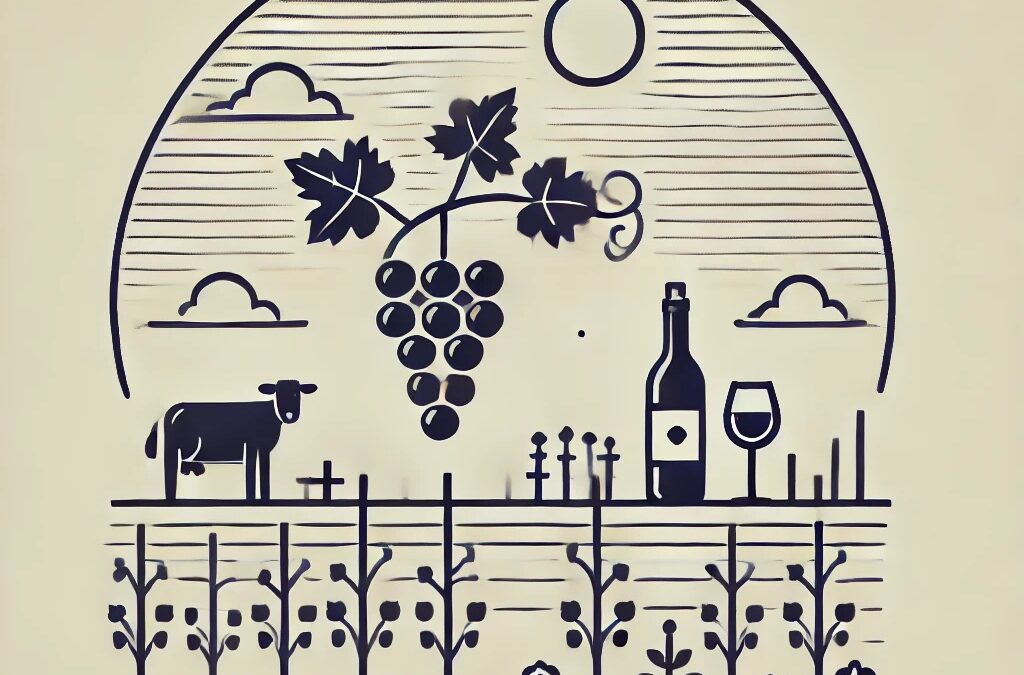
by Ross Kingsley | Aug 10, 2025 | WINES: UNCORKING THE MYSTERY
Biodynamic wine is more than just a buzzword; it represents a philosophy rooted in a harmonious relationship between the vineyard and its environment. This method extends beyond organic practices, incorporating holistic farming techniques based on the principles of Austrian philosopher Rudolf Steiner, who introduced biodynamics in the 1920s.
What Does Biodynamic Mean?
Biodynamic farming treats the vineyard as a living organism. It emphasizes soil health, biodiversity, and ecological balance. Practitioners follow a unique lunar and astrological calendar to guide planting, pruning, and harvesting. Preparations like cow horn manure (preparation 500) and silica sprays are used to enhance soil fertility and vine vitality.
A Brief History
Steiner’s ideas emerged during a period of agricultural decline, offering an alternative that emphasized sustainability and spirituality. The Demeter Association, founded in 1928, became the certifying body for biodynamic products, including wines. Over time, these principles gained traction among winemakers seeking sustainable and terroir-driven practices.
Adoption and Leading Producers
Biodynamic winemaking has found a dedicated following, especially in Europe. Prestigious estates like Domaine de la Romanée-Conti (France), Domaine Zind-Humbrecht (Alsace), and Austria’s Nikolaihof lead the charge. In the New World, wineries like California’s Benziger Family Winery and Chile’s Emiliana showcase biodynamic excellence.
Consumer Acceptance and Market Growth
Initially met with skepticism, biodynamic wines are now celebrated for their purity, complexity, and expression of terroir. While certification adds credibility, many wineries practice biodynamics without formal labels. Consumer demand for sustainable and ethical products has further boosted their popularity.
Why Biodynamic Wines Matter
As climate change and environmental concerns grow, biodynamic wines offer a pathway to sustainable viticulture. Their rising acceptance among connoisseurs and casual drinkers alike underscores their appeal—a marriage of quality, tradition, and ecological mindfulness.
Image Credit:
Home
_ _ _
© CHURRASCO PHUKET STEAKHOUSE / ALL RIGHTS RESERVED
>>> Reprinting, reposting & sharing allowed, in exchange for a backlink and credits <<<
Churrasco Phuket Steakhouse serves affordable Wagyu and Black Angus steaks and burgers. We are open daily from 12noon to 11pm at Jungceylon Shopping Center in Patong / Phuket.
We are family-friendly and offer free parking and Wi-Fi for guests. See our menus, reserve your table, find our location, and check all reviews here:
https://ChurrascoPhuket.com/
#Churrascophuket #jungceylon #phuketsteakhouse #affordablewagyu #wagyu
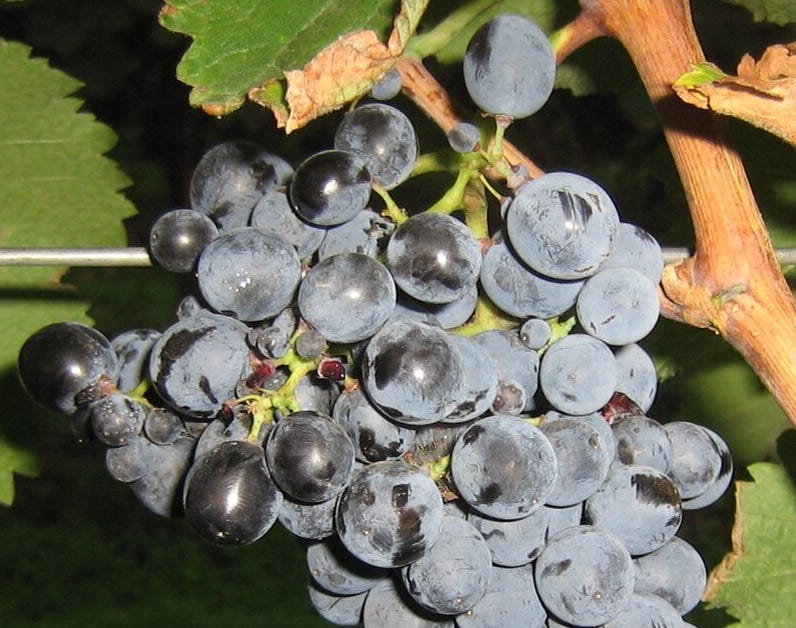
by lspeed | Aug 10, 2025 | WINES: UNCORKING THE MYSTERY
Saperavi is perhaps the world’s oldest distinctive red grape variety, hailing from the Caucasus nation of Georgia, where winemaking dates back over 8,000 years. The name Saperavi means “dye” or “to paint” in Georgian—a fitting term for this deeply pigmented, teinturier grape, which uniquely has red flesh as well as red skin. This genetic trait sets it apart from most red wine grapes, which typically have clear pulp.
Historically cultivated in Georgia’s eastern Kakheti region, Saperavi has become emblematic of the country’s winemaking heritage. It thrives in Kakheti’s continental climate, especially in vineyards around Telavi and the Alazani River Valley. Over centuries, it has developed a strong resistance to cold and disease, making it a reliable cultivar even in marginal years.
Saperavi grapes produce full-bodied, deeply colored wines with high acidity and robust tannin structure. The flavor profile typically includes black cherry, plum, mulberry, blackcurrant, and earthy undertones, often with hints of licorice, leather, and smoke as the wine ages. Its naturally high acidity allows for long aging potential, and its firm tannins give it excellent structure. Oak aging enhances complexity, although traditional Georgian methods favor clay qvevri vessels buried underground.
What truly distinguishes Saperavi, apart from its teinturier nature, is its versatility. It is made into dry reds, semi-sweets, fortified wines, and traditional qvevri wines. The dry style, often aged in oak, is bold and complex. Meanwhile, semi-sweet versions, like those from the Kindzmarauli and Akhasheni appellations, are rich and fruit-forward, balancing sweetness with refreshing acidity.
In recent decades, Saperavi has gained international attention. It’s now grown in countries with cooler climates such as Russia, Ukraine, Moldova, Armenia, and increasingly in New World wine regions like Australia and the Finger Lakes of New York, where its cold-hardiness and deep color are valued. While Georgian Saperavi tends to emphasize tradition and terroir, New World producers often explore more modern styles.
Modern winemakers in Georgia are experimenting with blending Saperavi with international varieties or vinifying it using both traditional qvevri and European methods to suit a broader global palate. As global wine consumers seek more authenticity and indigenous grapes, Saperavi has become a leading ambassador of Georgian viticulture.
Despite its growing global recognition, Saperavi remains deeply tied to Georgia’s national identity. Many Georgian families still produce their own Saperavi at home, and the grape features heavily in regional wine festivals and hospitality rituals. It is not merely a commercial crop, but a cultural artifact—representing resilience, continuity, and deep-rooted tradition.
For wine enthusiasts seeking something bold yet different, Saperavi offers a compelling alternative to better-known grapes like Cabernet Sauvignon or Syrah. Its capacity for aging, its dark color, and its uniquely Georgian character make it one of the most exciting heritage varietals on the market today.
Image Credit: https://wikipedia.org
_ _ _
© CHURRASCO PHUKET STEAKHOUSE / ALL RIGHTS RESERVED
Reprinting, reposting & sharing allowed, in exchange for a backlink and credits
Churrasco Phuket Steakhouse serves affordable Wagyu and Black Angus steaks and burgers. We are open daily from 12noon to 11pm at Jungceylon Shopping Center in Patong / Phuket.
We are family-friendly and offer free parking and Wi-Fi for guests. See our menus, reserve your table, find our location, and check all guest reviews here:
https://ChurrascoPhuket.com/
#Churrascophuket #jungceylon #phuketsteakhouse #affordablewagyu #wagyu
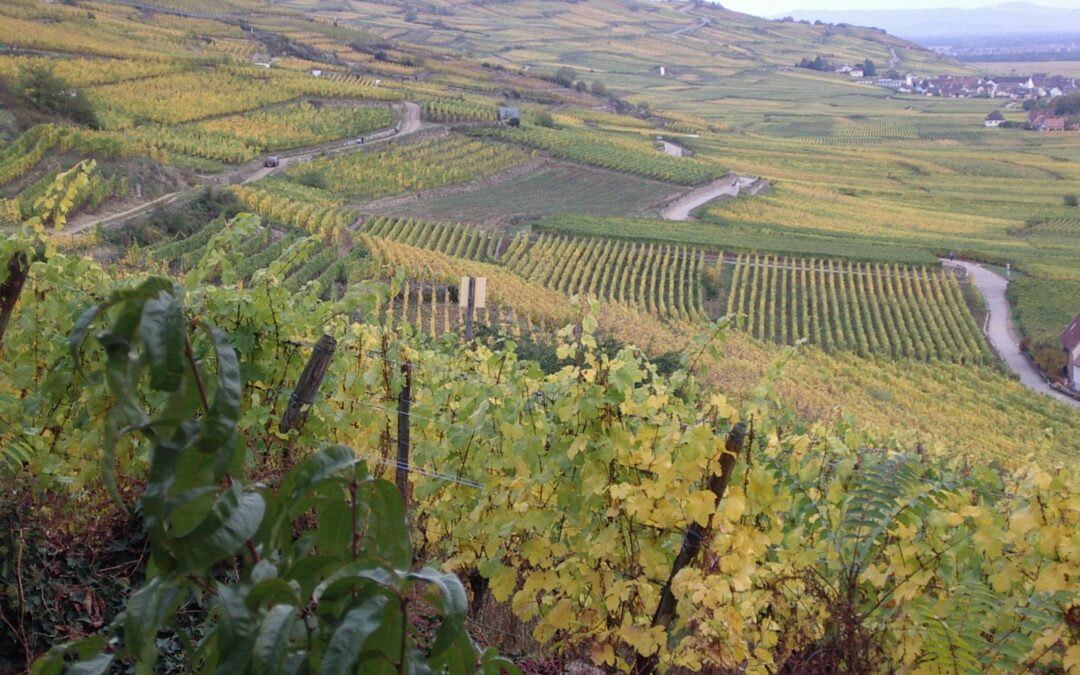
by lspeed | Jul 27, 2025 | WINES: UNCORKING THE MYSTERY
Tucked between the Vosges Mountains and the German border, Alsace is one of France’s distinctive yet underappreciated wine regions. Its wines are shaped by centuries of cultural tug-of-war and a unique geological patchwork, and offer some some of Europe’s more expressive whites. From dry Rieslings to opulent Gewürztraminers, Alsace is a white wine lover’s destination. Witha few reds and sparkling surprises thrown in.
Turbulent History
Alsace’s winemaking history dates back to Roman times, but its modern identity has been shaped by a long series of bloody French-German conflicts. The region changed hands five times between 1871 and 1945, and you can taste that dual heritage in the wines. Think French precision meets German grape varieties.
Unlike most French wine regions, Alsace labels its bottles by grape variety, a practice more common in Germany or the New World. The Germanic influence also explains the prevalence of Riesling, Gewürztraminer, and Sylvaner, though the wines are typically drier than their German counterparts. Alsace’s location on the eastern slopes of the Vosges shelters the vineyards from rain, making it one of France’s driest regions, and ideal for ripe, concentrated wines.
Grape Varieties
Alsace is overwhelmingly a white wine region. Its noble grapes (Riesling, Gewürztraminer, Pinot Gris, and Muscat) form the backbone of both still wines and prestigious Grand Cru bottlings. Here’s a quick breakdown of key varieties:
-
Riesling: Dry, mineral-driven, and built for aging.
-
Gewürztraminer: Spicy, floral, and exotic.
-
Pinot Gris: Richer than its Italian cousin, often off-dry.
-
Muscat: Fragrant and dry, making it a great aperitif.
-
Pinot Blanc: Fresh, light-bodied, used in Crémant d’Alsace sparkling wines.
-
Sylvaner: Less common, but capable of crisp whites when grown on good terroir.
-
Pinot Noir: The only permitted red grape, producing light, cherry-scented reds.
As mentioned, Alsace produces Crémant d’Alsace, a sparkling wine made in the traditional method, which accounts for more than 20% of regional production.
Characteristic Terroir
What sets Alsace apart is its mosaic of soils. Granite, limestone, clay, schist, and volcanic sediments all exist in close proximity, giving producers endless options for matching grape to ground. The region’s long growing season allows for slow ripening, leading to powerful aromatics and high natural acidity. Most wines are made dry, though late-harvest styles like Vendanges Tardives (VT) and Sélection de Grains Nobles (SGN) offer luscious, dessert-worthy richness.
Top Producers
While Alsace is dotted with small family domaines, several producers have earned international recognition for their consistency and character:
-
Domaine Zind-Humbrecht – Biodynamic pioneer with powerful, age-worthy wines.
-
Trimbach – Known for dry, precise Rieslings like the iconic Clos Ste. Hune.
-
Domaine Weinbach – Elegant, perfumed wines from the Clos des Capucins estate.
-
Hugel & Fils – One of the oldest and most widely distributed Alsace producers.
-
Albert Boxler – Artisan wines from the village of Niedermorschwihr.
-
Marcel Deiss – Advocates of terroir-based non-interventionist practices.
-
Dirler-Cadé – Biodynamic wines with a light touch.
-
Ostertag – Known expressive whites, and gentle oak use.
Fun Facts
-
Bottle Shape: Alsace wines come in tall, slender flûte d’Alsace bottles by law.
-
Grand Crus: There are 51 officially recognized Grand Cru vineyard sites, though some producers opt out of the system to maintain stylistic independence.
-
Food Pairings: Alsace wines are food-friendly. Try Gewürztraminer with Thai curry, Riesling with pork belly, or Pinot Gris with Foie Gras.
-
Organic Leadership: A higher percentage of Alsace vineyards are organic or biodynamic than in most French regions.
-
Wine Route: The Route des Vins d’Alsace, one of France’s oldest wine trails, winds through 170 km of vineyards, villages, and medieval castles.
Image Credit: https://wikipedia.org
_ _ _
© CHURRASCO PHUKET STEAKHOUSE / ALL RIGHTS RESERVED
Reprinting, reposting & sharing allowed, in exchange for a backlink and credits
Churrasco Phuket Steakhouse serves affordable Wagyu and Black Angus steaks and burgers. We are open daily from 12noon to 11pm at Jungceylon Shopping Center in Patong / Phuket.
We are family-friendly and offer free parking and Wi-Fi for guests. See our menus, reserve your table, find our location, and check all guest reviews here:
https://ChurrascoPhuket.com/
#Churrascophuket #jungceylon #phuketsteakhouse #affordablewagyu #wagyu
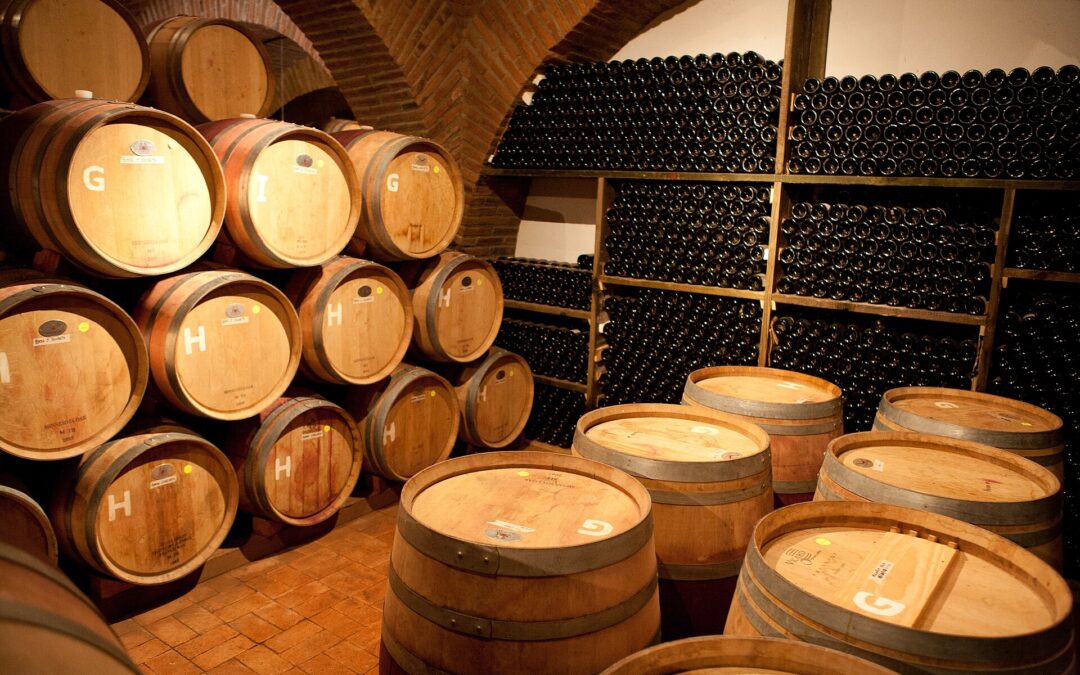
by lspeed | Jul 13, 2025 | WINES: UNCORKING THE MYSTERY
While Tequila and Mezcal are the undisputed flag bearers of Mexican alcoholic fame, few outside the wine world realize that Mexico has been making wine longer than any other country in the Americas. Lately, Mexican wines seem to be experiencing somewhat of a renaissance – international awards, occasional appearances on dining menus, and teasing the interest of adventurous wine lovers.
Colonial Legacy
The story begins in the early 16th century, when Spanish conquistadors and missionaries brought Vitis vinifera vines to New Spain. The first vineyards were planted around 1524 in what is now Hidalgo, and by the late 1500s, production had spread to other regions including Coahuila and Baja California. So successful was the local wine industry that King Philip II of Spain eventually banned further vineyard planting in 1595 to protect Spanish exports—a prohibition that lasted for centuries.
Despite this setback, monastic orders and local settlers kept the tradition alive, especially in northern regions. Commercial production only regained real momentum in the late 19th and 20th centuries, but it wasn’t until the 1990s and 2000s that a true quality revolution began. Today, Mexico’s wines are attracting global attention for their boldness, character, and sense of place.
Key Wine Regions
The heart of Mexican wine production lies in Baja California, especially the Valle de Guadalupe, often referred to as “Mexico’s Napa Valley.” With a Mediterranean climate, oceanic breezes, and granite soils, it offers ideal conditions for viticulture. Over 70% of Mexico’s wine comes from this region. Other emerging wine regions include:
-
Coahuila (home to Casa Madero, the oldest winery in the Americas, founded in 1597)
-
Querétaro, known for sparkling wines and higher-altitude vineyards
-
Zacatecas, Aguascalientes, and parts of Sonora, where modern wineries are exploring new terroirs
Grape Varieties
Mexico does not limit itself to one signature grape. Instead, it embraces a broad portfolio of international and lesser-known varieties.
Red grapes dominate:
-
Cabernet Sauvignon – widely planted
-
Tempranillo – a nod to Spanish heritage
-
Nebbiolo – producing robust wines, distinct from its Italian counterpart
-
Grenache, Merlot, Malbec, Syrah, Zinfandel – common and often blended
Whites are fewer:
Wineries in Baja often practice creative blending, unconstrained by European appellation rules, which adds to the region’s experimental flair.
Wine Styles
Mexican wines tend to be ripe, bold, and expressive, thanks to the warm climate and intense sunlight. Oak aging is common, especially for reds, lending flavors of spice, chocolate, and smoke.
Popular wine styles include:
-
Full-bodied reds: Particularly blends of Cabernet, Syrah, and Nebbiolo
-
Crisp whites: Especially from higher-altitude vineyards in Querétaro
-
Rosés: Increasingly trendy among younger consumers
-
Sparkling wines: Produced mainly in Querétaro, often via the traditional method
-
Natural and orange wines: A niche but growing trend in small-scale boutique wineries
Noteworthy Producers
Several wineries have spearheaded Mexico’s rise on the global wine scene:
-
Casa Madero (Coahuila): The oldest operating winery in the Americas, offering a wide portfolio of well-regarded wines.
-
Monte Xanic (Valle de Guadalupe): A pioneering premium winery, known for its bold reds and crisp whites.
-
L.A. Cetto (Baja California): One of the largest and most accessible producers, widely exported.
-
Santo Tomás: Historic winery with a legacy dating back to 1888.
-
Vena Cava and Adobe Guadalupe: Boutique producers focusing on artisanal quality and unique blends.
-
Freixenet México (Querétaro): A major sparkling wine producer with international ties.
These wineries blend traditional and modern techniques, with many using sustainable practices and small-batch fermentation to express terroir.
International Recognition
Though still relatively niche globally, Mexican wines are gaining attention. In the past decade, wines from Baja California and Coahuila have won medals at international competitions such as Concours Mondial de Bruxelles and Decanter World Wine Awards.
Distribution is expanding too—especially in the U.S., Canada, and select European and Asian markets. Mexican wines are increasingly featured in starred restaurants and high-end wine shops, especially in cities like Los Angeles, New York, Tokyo, and London.
Challenges & Opportunities
Mexico’s wine industry still faces hurdles – water scarcity in Baja California, limited government support, high production costs, and competition with imported wines. But opportunities abound in wine tourism with Valle de Guadalupe becoming a destination with boutique hotels, farm-to-table restaurants, and harvest festivals drawing both domestic and international visitors.
Image Credit: Adobe Guadalupe Winery, Ensenada, Baja California / Mexico
_ _ _
© CHURRASCO PHUKET STEAKHOUSE / ALL RIGHTS RESERVED
Reprinting, reposting & sharing allowed, in exchange for a backlink and credits
Churrasco Phuket Steakhouse serves affordable Wagyu and Black Angus steaks and burgers. We are open daily from 12noon to 11pm at Jungceylon Shopping Center in Patong / Phuket.
We are family-friendly and offer free parking and Wi-Fi for guests. See our menus, reserve your table, find our location, and check all guest reviews here:
https://ChurrascoPhuket.com/
#Churrascophuket #jungceylon #phuketsteakhouse #affordablewagyu #wagyu
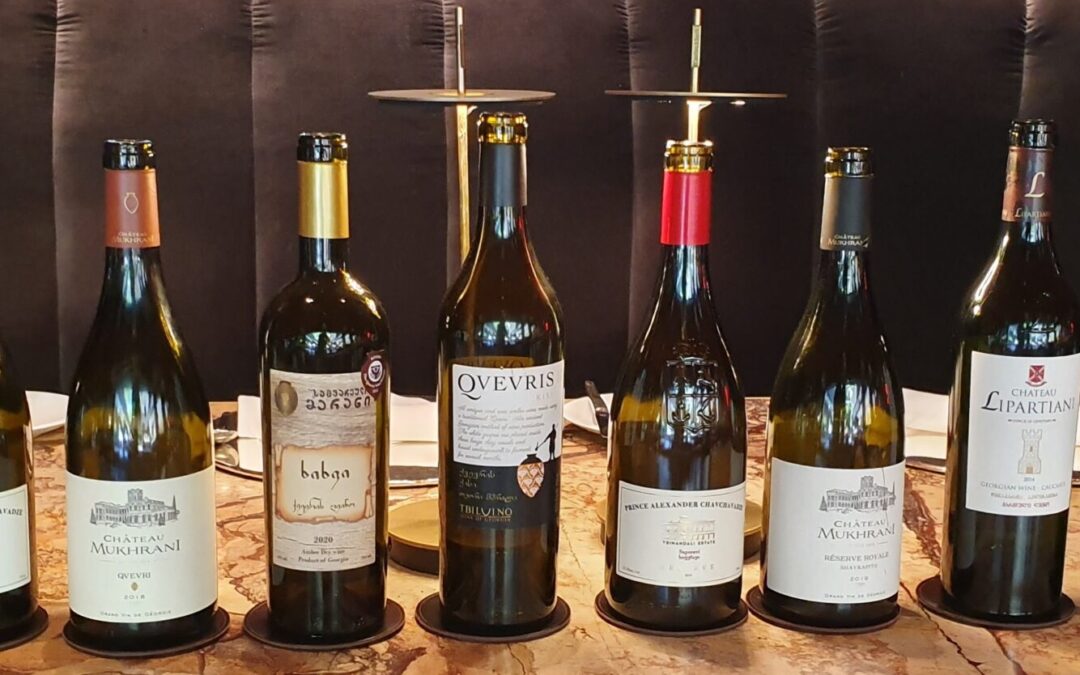
by lspeed | Jun 29, 2025 | WINES: UNCORKING THE MYSTERY
In the heart of the Caucasus Mountains, bordered by Russia to the north and Turkey to the south, lies a small country with an outsized legacy in the world of wine: Georgia. It’s not only one of the oldest wine-producing regions in the world, but also home to a uniquely traditional style of winemaking that continues to influence vintners across the globe.
Where Wine Was Born
Archaeological discoveries in Georgia have reshaped our understanding of viticulture’s origins. In 2017, excavations in the Kvemo Kartli region unearthed 8,000-year-old pottery fragments containing traces of tartaric acid and grape pollen, evidence of the world’s earliest known winemaking. These findings pushed back the global wine timeline by nearly a thousand years, confirming Georgia as possibly the true cradle of wine. But beyond the artifacts lies a living tradition, because for thousands of years, wine has been deeply embedded in Georgian culture, religion, and hospitality. Wine is poured at every supra (feast), raised in elaborate toasts led by a tamada (toastmaster), and viewed as a bond between people, land, and history.
The Qvevri Fermentation Method
What sets Georgian winemaking apart is the continued use of Qvevri. large, egg-shaped clay vessels buried underground. Grapes are crushed and placed into these amphora-like containers along with their skins, stems, and seeds, then sealed and left to ferment naturally for months. This ancient technique not only predates modern barrels but also imparts distinct textures and earthy complexity to the wines. Qvevri winemaking is now UNESCO-listed as part of Georgia’s cultural heritage, and its revival has inspired a wine movement that preserves low-intervention practices.
Indigenous Grape Varieties
Georgia is home to more than 500 indigenous grape varieties, a diversity unmatched by any other country. While only a fraction are used commercially today, the most prominent include:
-
Rkatsiteli – A versatile white grape known for its crisp acidity and compatibility with Qvevri aging. Often citrusy, herbal, and mineral-driven.
-
Saperavi – Georgia’s flagship red, and one of the rare teinturier grapes with red flesh. Deeply colored, full-bodied, and capable of long aging.
-
Mtsvane – A fragrant white grape that balances floral aromatics with good acidity.
-
Kisi – Often used in amber (orange) wines, offering rich stone fruit, honey, and spice notes.
Wine Styles
Georgian wines come in three main forms:
-
White wines, typically made from Rkatsiteli or Mtsvane, ranging from fresh and fruity to structured amber wines made in qvevri with extended skin contact.
-
Red wines, dominated by Saperavi, can be dry, semi-sweet, or aged, with powerful dark fruit and robust tannins.
-
Amber wines, often confused with orange wines, are made by fermenting white grapes with their skins in qvevri, resulting in wines with tannic grip, oxidative depth, and unique flavors.
In addition, regions like Khvanchkara and Kindzmarauli are known for their naturally semi-sweet reds, a nod to the Soviet-era palate that still finds fans today.
Top Producers
Georgia’s wine renaissance has seen both ancient methods and modern excellence thrive side-by-side. Here are five producers leading the charge:
-
Pheasant’s Tears – A pioneer of the natural wine revival, using only indigenous grapes and traditional qvevri methods in Kakheti.
-
Teliani Valley – One of Georgia’s largest and most consistent producers, offering a range of traditional and modern styles.
-
Shumi Winery – Known for experimental blends and the preservation of rare grape varieties.
-
Lopota Estate Winery – A boutique producer tied to a luxury resort, combining modern precision with qvevri heritage.
-
Château Mukhrani – Reinvigorating a 19th-century royal estate, Mukhrani blends history with high-end winemaking and European flair.
Image Credit: https://gwa.ge (Georgia Wine Association)
_ _ _
© CHURRASCO PHUKET STEAKHOUSE / ALL RIGHTS RESERVED
Reprinting, reposting & sharing allowed, in exchange for a backlink and credits
Churrasco Phuket Steakhouse serves affordable Wagyu and Black Angus steaks and burgers. We are open daily from 12noon to 11pm at Jungceylon Shopping Center in Patong / Phuket.
We are family-friendly and offer free parking and Wi-Fi for guests. See our menus, reserve your table, find our location, and check all guest reviews here:
https://ChurrascoPhuket.com/
#Churrascophuket #jungceylon #phuketsteakhouse #affordablewagyu #wagyu
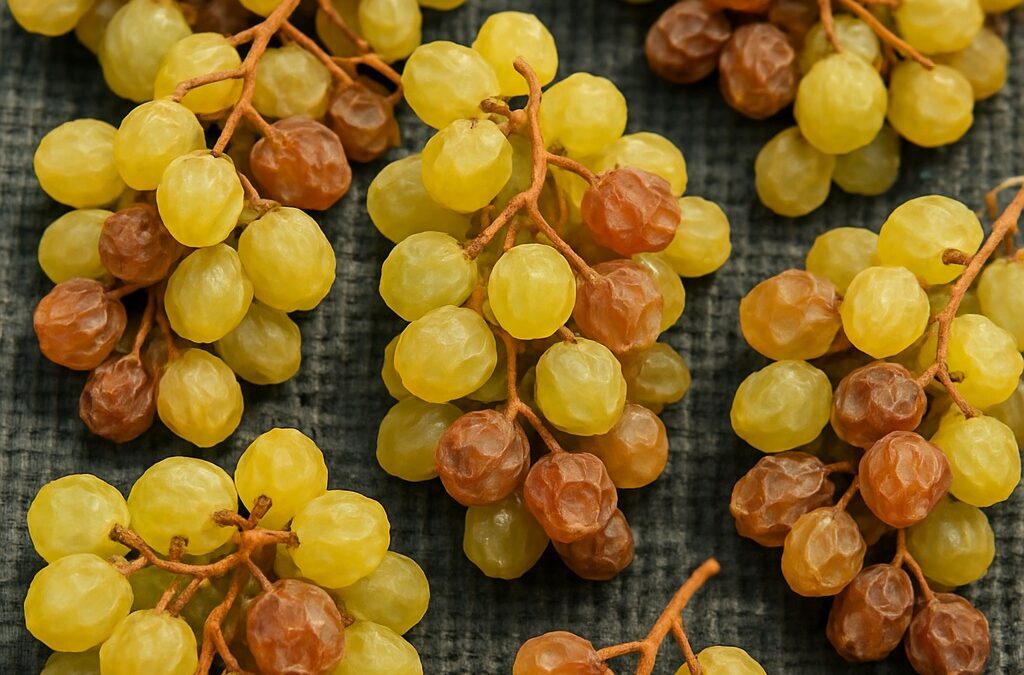
by lspeed | Jun 15, 2025 | WINES: UNCORKING THE MYSTERY
The term Appassimento is most commonly associated with deep, brooding red wines, such as Amarone. But a small group of winemakers, primarily in northern Italy, have crafted white Appassimento wines for centuries. These golden-hued bottlings offer rich textures, complexity, and a freshness that belies their concentration. Though rare, white Appassimento wines are gaining traction among sommeliers and curious wine aficionados.
The Method
The Appassimento technique involves drying grapes after harvest to reduce water content and concentrate sugars, acids, and phenolics. This process dates back to Roman times and was traditionally practiced by laying grapes on straw mats or hanging them from rafters. In the Veneto region, this became central to producing wines like Recioto and Amarone.
While most Appassimento wines are red, there is historical precedent for white versions. Sweet white passiti, often made from varieties like Garganega, Malvasia, or Moscato, have long been crafted across Italy. These dessert wines are older cousins to white Appassimentos, but the modern dry or off-dry white versions are a relatively recent phenomenon.
Rare & Niche
White Appassimento wines are rare for several reasons. First, the risk of rot and oxidation is greater with white grapes during the drying process, requiring extreme care and controlled conditions. Second, consumer demand for oxidative or rich white wines has historically been limited compared to the broader market for reds.
Third, there is no DOC or formal classification that clearly champions dry white Appassimento wines, meaning producers must innovate outside traditional appellation frameworks. Despite these hurdles, some winemakers persist, motivated by tradition, experimentation, or the desire to coax extra complexity from local grapes.
Prominent Producers
In Italy, the most notable white Appassimento wines come from the Veneto. Among the few producers embracing them is Masi Agricola. Known for its role in internationalizing Amarone, Masi has extended its expertise to white grapes. One example is their Masianco, a blend of Pinot Grigio and Verduzzo grapes.
Pieropan have occasionally used Appassimento techniques to create rich, barrel-aged versions of Soave using partially dried Garganega grapes. Cantina di Negrar, a co-op in Valpolicella, has produced white wines using the Appassimento method from native grapes like Garganega and Trebbiano di Lugana.
Another example is Le Fraghe near Lago di Garda, which has explored white Appassimento styles using local varieties and minimal intervention methods. Further south, Maestro Italiano in Puglia promotes its Appassimento Bianco Puglia, and Donnafugata in Sicily uses semi-dried Zibibbo grapes for its white wines, though often still in sweeter or semi-sweet formats.
Even in Switzerland’s Ticino region, Gialdi Vini makes a white Merlot via partial drying, demonstrating the method’s appeal beyond Italy.
What’s In The Glass
White Appassimento wines are about contrast – richness meets lift, power meets elegance. Depending on vinification choices, they can range from full-bodied, golden, and textured to bright, floral, and nutty. Common tasting notes include preserved lemon, dried apricot, baked apple, chamomile, almond skin, and a saline or mineral finish. Oak aging adds further layers of vanilla, toast, or spice in some bottlings.
Alcohol levels are often higher (13.5%–15%), but the best examples maintain balance thanks to naturally high-acid grapes and thoughtful winemaking. While still a niche category, white Appassimento wines offer an alternative to Chardonnay or Viognier for those seeking texture and complexity without excessive sweetness. As natural wine, low-intervention, and oxidative styles grow in popularity, these rare whites may finally receive the broader appreciation they deserve.
Image Credit: https://churrascophuket.com
_ _ _
© CHURRASCO PHUKET STEAKHOUSE / ALL RIGHTS RESERVED
Reprinting, reposting & sharing allowed, in exchange for a backlink and credits
Churrasco Phuket Steakhouse serves affordable Wagyu and Black Angus steaks and burgers. We are open daily from 12noon to 11pm at Jungceylon Shopping Center in Patong / Phuket.
We are family-friendly and offer free parking and Wi-Fi for guests. See our menus, reserve your table, find our location, and check all guest reviews here:
https://ChurrascoPhuket.com/
#Churrascophuket #jungceylon #phuketsteakhouse #affordablewagyu #wagyu



